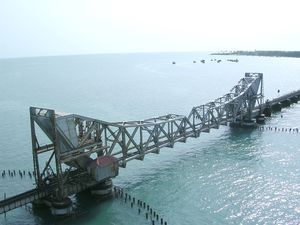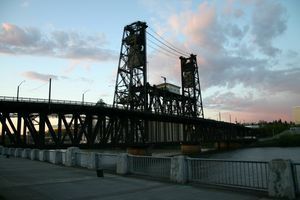Movable Bridges Types, Design and History
Moveable bridge is a bridge that can change position (and even shape in some cases) to allow for passage of boats below. This type of bridge has a lower cost of building because it has no high piers and long approaches but its use stops the road traffic when the bridge is open for river traffic.
The oldest know movable bridge was built in the 2nd millennium BC in the ancient Egypt. History also knows for one early movable bridge built in Chaldea in the Middle East in 6th century BC. Since then they were almost forgotten until Middle Ages when they again appeared in Europe. Leonardo da Vinci designed and built designed and built bascule bridges in 15th century. He also made designs and built models of swing and a retractable bridges. Industrial revolution allowed for new technologies like mass-produced steel and powerful machines and it is no surprise that new types of modern movable bridges appeared in 19th century. They are built even today but many movable bridges that are still in use in United States are built in early 20th century. In time, some of them are repaired with lighter materials and their gears are replaced with hydraulics.

Moveable bridge can be designed in many ways. Here are some moveable bridge variants:
- Drawbridge is another name for movable bridge in American English bit in British English it is name for a bridge that has hinges only on one end and is lifted with chains. It was usually used at the entrances of the castles.
- Bascule Bridge can have one or both spans which have counterweights that balance them and make lifting easier. Rolling Bascule Bridge has no counterweights but it is lifted by the rolling of a large gear segment along a horizontal rack.
- Folding bridge has more sections that are connected to each other by hinges and collapse together horizontally.
- Curling Bridge has many segments and when it is lifted it curls into a cylinder. There is, for now, only one such bridge: “The Rolling Bridge” at Grand Union Canal office & retail development project at Paddington Basin, London. It has hydraulics in the posts of a handrail which lift and curl the bridge.
- Vertical-lift Bridge has a span that rises vertically while remaining parallel with the deck and allows river traffic to pass below. It uses counterweights or hydraulics which are placed in towers on bothe end of the span to lift the span.
- Table Bridge works similarly to vertical-lift bridge but its span is lifted by hydraulics which are placed under the bridge and not in towers above.
- Retractable Bridge (or a thrust bridge) has a deck that can be retracted to one side. They are not too common because they require a large dedicated area. They allow very high boats to pass without any limitation.
- Submersible bridge (or a ducking bridge) does what it says on the tin – it is submerged into water to clear way for boats. It allows high boats to pass but it limits their draft.
- Tilt Bridge is a bridge that rotates about hinges at its ends and is lifted at the angle. It can be curved like Gateshead Millennium Bridge or straight like Sint-Annabrug over the river Dender in Aalst.
- Swing Bridge has a deck that rotates horizontally around fixed point (at center or at one of the ends if they are smaller) and is placed parallel with the river when it is open.
- Transporter Bridge (other names are “ferry bridge” or “aerial transfer bridge”) have a construction that carries a segment of roadway across a river. There are no more than twelve bridges of this type in operation today.

